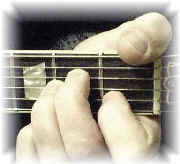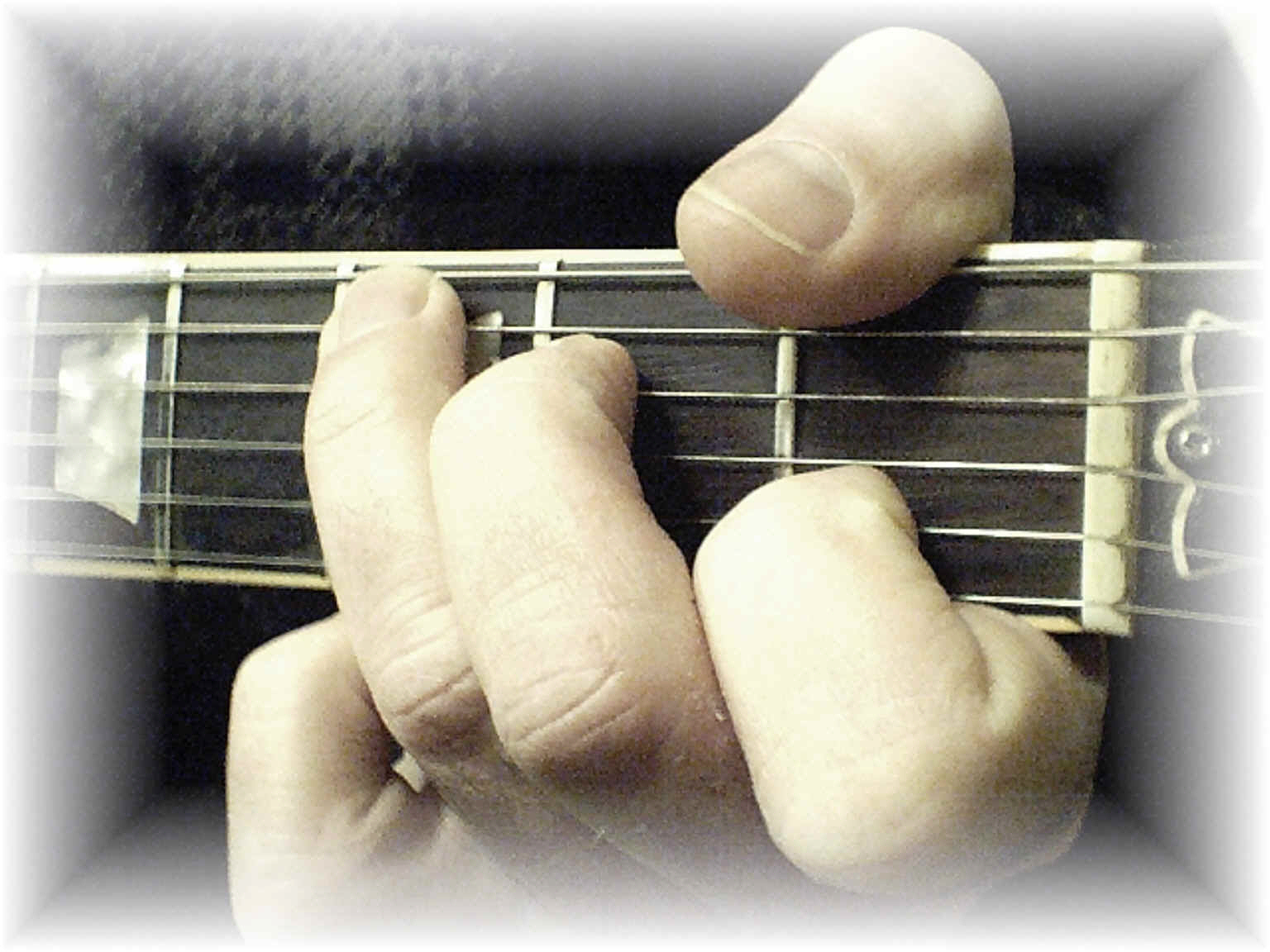In this chapter we need to learn a little more about chords and tablature. Since we are learning the Am pentatonic scale, it's a good idea that we learn the chords that blend in with this scale. These chords will be used for our back up rhythm to play a few leads over. The first chord we should go over is the Am chord. The Am chord is the main chord in the Am pentatonic scale.
The notes that make up the Am chord are A C E. All minor chords are made up of the (1st or root), flat 3rd and 5th notes. Remember in our previous lessons that I said the little (m) represents the minor chord. (Am) = A minor. The Major chord is represented with its letter name only. (C) = C Major.
Before we get into any progressions or rhythms, we need to learn the chords we will be using.
 |
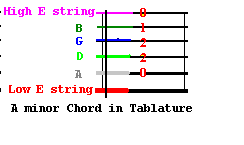 |
The first illustration above to the left is showing the Am chord being played in the open position. The second illustration shows the Am chord and the notes laid out on the fret board. The third illustration above shows the Am chord written in tablature. Notice the numbers on each string in the illustration to the right. Each number equals the fret being played, and each number is on the particular string you play.
Notice the 0 on the A string above. That 0 means you leave that string open. You do not fret that string, but you do strum it along with the other notes of that chord. Notice the 2 on the D string. That 2 represents the second fret D string.
Notice the 2 on the G string. That 2 represents the second fret on the G string.
Notice the 1 on the B string. That 1 represents the first fret on the B string.
Notice the 0 on the High E string. That 0 means that you do not fret that string, but you strum that string along with all the notes.
You will notice that when you review the open chords chapter, it will say now that you have learned all the Am pentatonic scales in every position, we can learn some chords. No we haven't learned every position yet. We will eventually get to other positions of the pentatonic scale, but we need to learn more about guitar chords.
|
Look at the illustration below. This shows the chords listed in tablature. A good exercise is to play each note of the chord, then move to the next chord to the right. Example. Play the Am chord one note at a time starting with the open A string. Then play the next note which is the 2 fret on the D string. Examples below. |
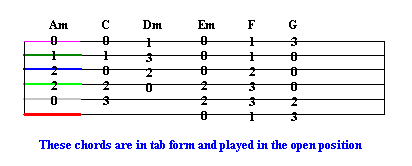

Look at the illustration above. Each of the the chords above are written in tablature. Play each note of the chord one at a time. By playing one note of a chord at a time is called an arpeggio. If you were to strum all the notes at once, it is a chord. All the notes of a chord played one at a time would be an arpeggio. We will learn more about arpeggios later on. Play the exercise above as often as possible.
Assignments:
Listen to the slow song. | |
|
Listen to the slow song with a heavier lead for electric guitar. | |
|
Review the tablature chapter. | |
|
Review the open chords chapter. | |
|
Practice the open position chords. | |
|
Practice the root 6 bar chords. | |
Practice the root 5 bar chords. | |
|
Look at the technique chapter. Hammer ons, pull offs and bending. | |
Use the illustration below to fill in the Am C Dm Em F and G chords in tablature. | |
Practice the exercise above as much as possible, picking each note of the chord one at a time. |

One note for each chord has been illustrated above to get you started.
Your assignment is to fill in the missing open position chords in tablature above using the wheel below for your reference. This wheel shows each chord in the key of C and each section shows the notes that make up each chord. You may want to review the chord chapter if your not familiar with each chord.
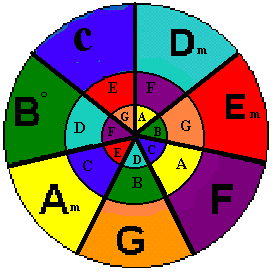 |
|
The illustration below shows the C major and F major chords in tablature form. Tablature is an alternative way of reading and writing music. Each number below represents the fret and string played. You should review the tablature section if your not comfortable with this system.

|
|
|
Good Luck,
From the Jam Room


